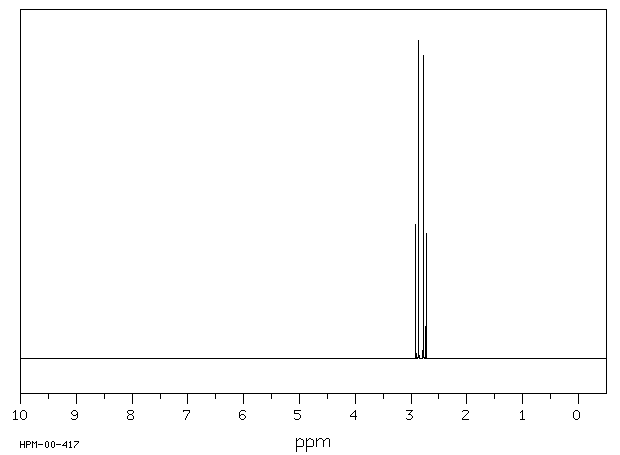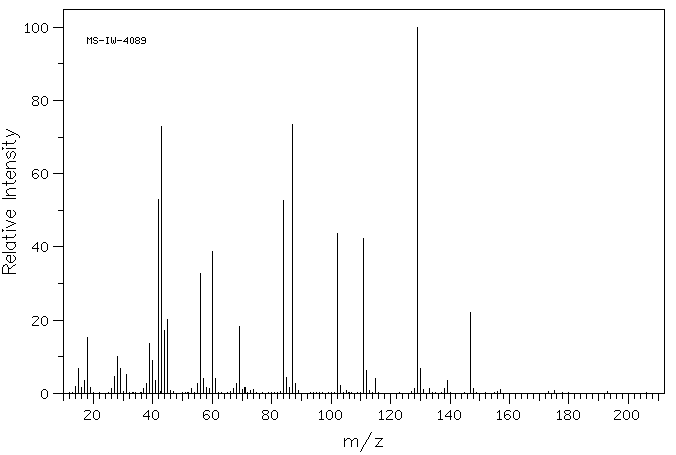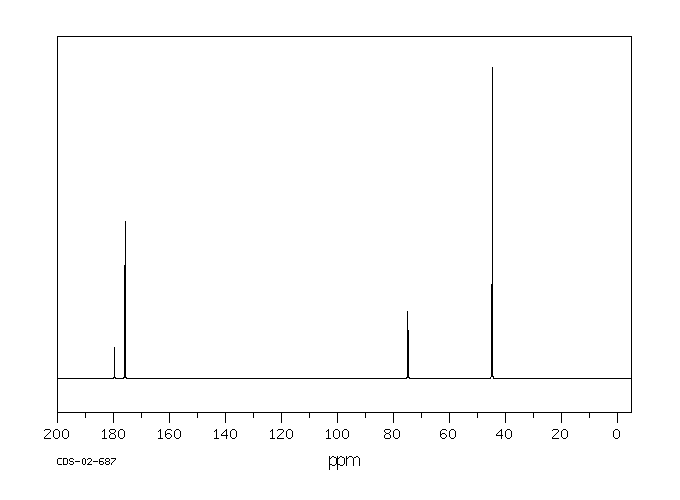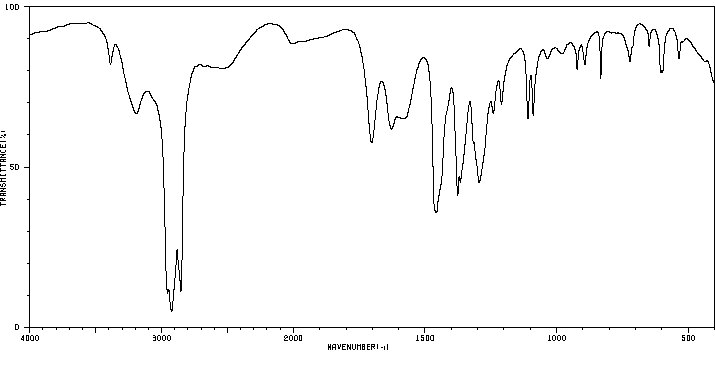| Name: | Ammonium Citrate Dibasic Material Safety Data Sheet |
| Synonym: | Ammonium monohydrogen citrate; citric acid diammonium salt; diammonium citrate; diammonium hydrogen citratae; dibasic ammonium ci |
| CAS: | 3012-65-5 |
Section 1 - Chemical Product MSDS Name:Ammonium Citrate Dibasic Material Safety Data Sheet
Synonym:Ammonium monohydrogen citrate; citric acid diammonium salt; diammonium citrate; diammonium hydrogen citratae; dibasic ammonium ci
Section 2 - COMPOSITION, INFORMATION ON INGREDIENTS | CAS# | Chemical Name | content | EINECS# |
| 3012-65-5 | Ammonium Citrate Dibasic | 100 | 221-146-3 |
Hazard Symbols: XI
Risk Phrases: 36/37/38
Section 3 - HAZARDS IDENTIFICATION EMERGENCY OVERVIEW
Irritating to eyes, respiratory system and skin.
Potential Health Effects
Eye:
Causes eye irritation. May cause cataracts and atrophy of the retina and iris. May cause severe and immediate pain followed by conjunctival edema and corneal clouding.
Skin:
May cause severe irritation and possible burns.
Ingestion:
May cause gastrointestinal irritation with nausea, vomiting and diarrhea.
Inhalation:
May cause cyanosis (bluish discoloration of skin due to deficient oxygenation of the blood). Causes respiratory tract irritation.
Inhalation of high concentrations can cause swelling of the lips and conjunctiva, temporary blindness, chest tightness, rapid and weak pulse, and pulmonary edema.
Chronic:
No information found.
Section 4 - FIRST AID MEASURES Eyes: Immediately flush eyes with plenty of water for at least 15 minutes, occasionally lifting the upper and lower eyelids. Get medical aid immediately.
Skin:
Get medical aid. Immediately flush skin with plenty of water for at least 15 minutes while removing contaminated clothing and shoes.
Ingestion:
Do not induce vomiting. If victim is conscious and alert, give 2-4 cupfuls of milk or water. Never give anything by mouth to an unconscious person. Get medical aid.
Inhalation:
Remove from exposure and move to fresh air immediately. If not breathing, give artificial respiration. If breathing is difficult, give oxygen. Get medical aid.
Notes to Physician:
Absorption of this product into the body may cause cyanosis (bluish discoloration of skin due to deficient oxygenation of the blood).
Moderate degrees of cyanosis need to be treated only by supportive measures: bed rest and oxygen inhalation. For methemoglobinemia, administer oxygen alone or with Methylene Blue depending on the methemoglobin concentration in the blood. Cleansing of the entire contaminated area of the body is of utmost importance.
Section 5 - FIRE FIGHTING MEASURES General Information:
As in any fire, wear a self-contained breathing apparatus in pressure-demand, MSHA/NIOSH (approved or equivalent), and full protective gear. During a fire, irritating and highly toxic gases may be generated by thermal decomposition or combustion. Runoff from fire control or dilution water may cause pollution.
Extinguishing Media:
Use agent most appropriate to extinguish fire. Use water spray, dry chemical, carbon dioxide, or alcohol-resistant foam.
Section 6 - ACCIDENTAL RELEASE MEASURES General Information: Use proper personal protective equipment as indicated in Section 8.
Spills/Leaks:
Vacuum or sweep up material and place into a suitable disposal container. Clean up spills immediately, observing precautions in the Protective Equipment section. Avoid generating dusty conditions.
Provide ventilation.
Section 7 - HANDLING and STORAGE Handling:
Use with adequate ventilation. Minimize dust generation and accumulation. Avoid contact with skin and eyes. Avoid ingestion and inhalation.
Storage:
Store in a tightly closed container. Store in a cool, dry, well-ventilated area away from incompatible substances.
Section 8 - EXPOSURE CONTROLS, PERSONAL PROTECTION Engineering Controls:
Facilities storing or utilizing this material should be equipped with an eyewash facility and a safety shower. Use adequate ventilation to keep airborne concentrations low.
Exposure Limits CAS# 3012-65-5: Personal Protective Equipment Eyes: Wear appropriate protective eyeglasses or chemical safety goggles as described by OSHA's eye and face protection regulations in 29 CFR 1910.133 or European Standard EN166.
Skin:
Wear appropriate gloves to prevent skin exposure.
Clothing:
Wear appropriate protective clothing to prevent skin exposure.
Respirators:
Follow the OSHA respirator regulations found in 29 CFR 1910.134 or European Standard EN 149. Use a NIOSH/MSHA or European Standard EN 149 approved respirator if exposure limits are exceeded or if irritation or other symptoms are experienced.
Section 9 - PHYSICAL AND CHEMICAL PROPERTIES Physical State: Solid
Color: white
Odor: ammonia-like - weak odor
pH: 4.8-5.3 (5% soln)
Vapor Pressure: Not available.
Viscosity: Not available.
Boiling Point: Not available.
Freezing/Melting Point: Decomposes.
Autoignition Temperature: Not applicable.
Flash Point: Not applicable.
Explosion Limits, lower: Not available.
Explosion Limits, upper: Not available.
Decomposition Temperature: Not available.
Solubility in water: Soluble in water.
Specific Gravity/Density: 1.5
Molecular Formula: (NH4)2C6H6O7
Molecular Weight: 226.1072
Section 10 - STABILITY AND REACTIVITY Chemical Stability:
Stable under normal temperatures and pressures.
Conditions to Avoid:
Incompatible materials, dust generation, excess heat, strong oxidants.
Incompatibilities with Other Materials:
Strong oxidizers.
Hazardous Decomposition Products:
Carbon monoxide, carbon dioxide, nitrogen oxides (NOx) and ammonia (NH3).
Hazardous Polymerization: Has not been reported.
Section 11 - TOXICOLOGICAL INFORMATION RTECS#:
CAS# 3012-65-5 unlisted.
LD50/LC50:
Not available.
Carcinogenicity:
Ammonium Citrate Dibasic - Not listed by ACGIH, IARC, or NTP.
Section 12 - ECOLOGICAL INFORMATION
Section 13 - DISPOSAL CONSIDERATIONS Products which are considered hazardous for supply are classified as Special Waste and the disposal of such chemicals is covered by regulations which may vary according to location. Contact a specialist disposal company or the local waste regulator for advice. Empty containers must be decontaminated before returning for recycling.
Section 14 - TRANSPORT INFORMATION IATA
Shipping Name: Not regulated.
Hazard Class:
UN Number:
Packing Group:
IMO
Shipping Name: Not regulated.
Hazard Class:
UN Number:
Packing Group:
RID/ADR
Shipping Name: Not regulated.
Hazard Class:
UN Number:
Packing group:
USA RQ: CAS# 3012-65-5: 5000 lb final RQ; 2270 kg final RQ
Section 15 - REGULATORY INFORMATION European/International Regulations
European Labeling in Accordance with EC Directives
Hazard Symbols: XI
Risk Phrases:
R 36/37/38 Irritating to eyes, respiratory system
and skin.
Safety Phrases:
S 24/25 Avoid contact with skin and eyes.
WGK (Water Danger/Protection)
CAS# 3012-65-5: 1
Canada
CAS# 3012-65-5 is listed on Canada's DSL List.
CAS# 3012-65-5 is not listed on Canada's Ingredient Disclosure List.
US FEDERAL
TSCA
CAS# 3012-65-5 is listed on the TSCA inventory.
SECTION 16 - ADDITIONAL INFORMATION N/A










